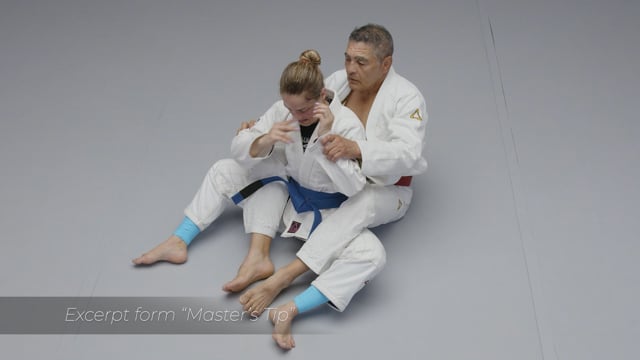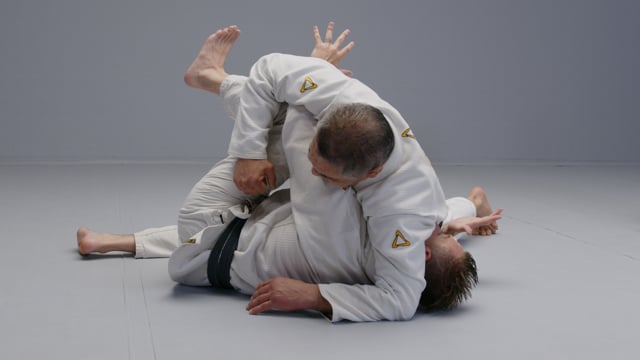In the 2000s, the MMA events in Japan were at their peak, and promoters hired Royler Gracie for another challenge. The family's leanest active fighter then gathered his father Helio and his brother Rickson for a study of techniques at Gracie Humaitá's HQ in Rio de Janeiro.
In those historic images, Grandmaster Helio is wearing jeans and socks, leaning on the wall, reflecting about slaps and open-handed strikes for when Royler couldn't punch, from below.
Next to his father, Master Rickson also watches the training, and philosophizes about the power of the guard in jiujitsu—a concept useful to this day for both novice white-belts and UFC stars.
Rickson says, "Your opponent on top cannot feel any comfort when he is inside your guard. Your goal should always be to make him want to get out of there fast, or go crazy and attack you carelessly." He then adds, "The opponent on top can't feel at home, no matter what."
Feel free to eavesdrop on some of Rickson and Royler's guard study in the following excerpt.
But how should you train to have a powerful guard to the point of keeping your opponent in constant annoyance? The answer begins with proper strength, weight distribution, and full connection to your opponent's movements.
But how should you train to have a powerful guard to the point of keeping your opponent in constant annoyance? The answer begins with proper strength, weight distribution, and full connection to your opponent's movements.
Learn, below, the first concepts for having a resourceful, flawless guard that is always ready to put you at ease—and make your opponent tired and uncomfortable.


Comments
Oss
Nobody explained that to me before! And I was a practitioner in a gracie academy...